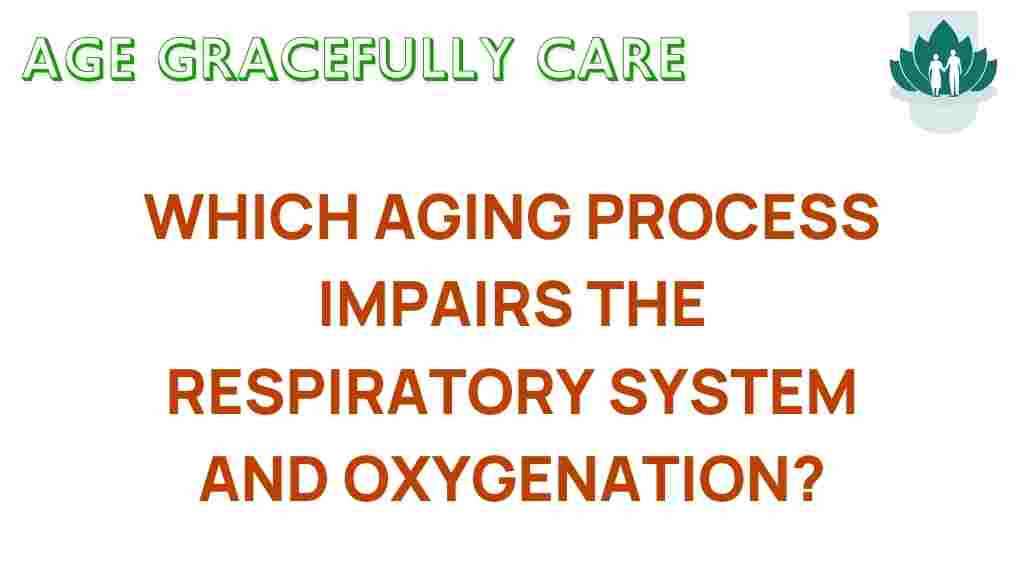Unveiling the Aging Process and Its Impact on Respiratory Health
The aging process is a natural part of life that brings about several physiological changes in our bodies. Among the most affected systems is the respiratory system, which plays a crucial role in oxygenation and overall health. As we age, various age-related changes can disrupt lung function and lead to a significant health decline, especially in the elderly. This article explores how the aging process affects respiratory health and offers insights into maintaining wellness in later years.
Understanding the Aging Process and Respiratory Health
The relationship between the aging process and respiratory health is complex. Various factors contribute to respiratory decline, including:
- Structural changes in the lungs
- Decreased elasticity of lung tissue
- Weakened respiratory muscles
- Increased prevalence of chronic conditions
These age-related changes can lead to complications such as chronic obstructive pulmonary disease (COPD), pneumonia, and other respiratory infections. Understanding these changes is vital for elderly care and promoting a healthy lifestyle.
Age-Related Changes in the Respiratory System
As individuals age, the respiratory system undergoes several changes that can affect lung function and oxygenation:
- Decreased Lung Capacity: The total lung capacity and vital capacity may decrease, leading to reduced airflow and oxygen intake.
- Reduced Ciliary Function: The tiny hair-like structures in the respiratory tract become less effective, making it harder to clear mucus and debris.
- Alveolar Changes: The alveoli, responsible for gas exchange, may become less effective due to loss of elasticity and surface area.
- Weakened Immune Response: Aging can impair the immune system, increasing susceptibility to respiratory infections.
Recognizing these changes is essential for promoting better respiratory health in the elderly.
How the Aging Process Disrupts Oxygenation
Oxygenation is vital for bodily functions, and the aging process can significantly disrupt this process. Factors affecting oxygenation in the elderly include:
- Decreased Oxygen Uptake: Age-related changes in lung function can lead to lower levels of oxygen in the bloodstream.
- Increased Work of Breathing: Weakened respiratory muscles may require more effort to breathe, leading to fatigue.
- Chronic Conditions: Conditions like asthma and COPD, which are more prevalent in the elderly, can further hinder oxygenation.
These factors increase the risk of health decline, impacting overall wellness and quality of life.
Common Respiratory Issues in the Elderly
As the aging process takes its toll, several respiratory issues become more common among the elderly:
- Chronic Obstructive Pulmonary Disease (COPD): A progressive disease that makes it difficult to breathe, often caused by long-term exposure to irritants like tobacco smoke.
- Pneumonia: A serious infection that inflames the air sacs in one or both lungs, making it a significant concern for older adults.
- Asthma: While it can occur at any age, asthma may worsen in older adults due to changes in lung function.
- Interstitial Lung Disease: A group of disorders that cause progressive scarring of lung tissue, leading to breathing difficulties.
Identifying and managing these conditions is essential for maintaining respiratory health during the aging process.
Steps to Maintain Respiratory Health in the Elderly
Maintaining respiratory health is crucial for promoting wellness and preventing health decline in the elderly. Here are several steps that can help:
1. Regular Health Check-ups
Frequent visits to healthcare providers can help monitor respiratory health and identify any emerging issues early.
2. Stay Active
Engaging in regular physical activity can strengthen respiratory muscles and improve lung function. Simple exercises like walking or swimming can be beneficial.
3. Quit Smoking
For those who smoke, quitting is one of the most significant steps to protect lung health. Resources are available to help individuals quit smoking effectively.
4. Manage Chronic Conditions
Proper management of chronic conditions like asthma or COPD is vital. This includes taking prescribed medications and following up with healthcare providers regularly.
5. Avoid Environmental Irritants
Reducing exposure to pollutants, allergens, and irritants can help maintain lung health. This includes avoiding secondhand smoke and staying indoors on poor air quality days.
6. Respiratory Rehabilitation
Programs designed to improve respiratory function can be very beneficial for older adults. These may include breathing exercises and education on lung health.
7. Stay Hydrated
Drinking plenty of fluids helps keep mucus thin and easier to clear from the airways.
Troubleshooting Common Respiratory Problems
While aging can affect respiratory health, there are strategies to troubleshoot common problems:
- Shortness of Breath: If breathing feels labored, consider sitting upright and practicing deep breathing exercises. Seek medical advice if symptoms persist.
- Coughing or Wheezing: Keep track of any persistent coughing and speak to a healthcare provider if it does not resolve.
- Frequent Respiratory Infections: Discuss with a doctor about vaccination options, such as the flu and pneumonia vaccines, to prevent infections.
Proactive management of these issues can help maintain respiratory wellness as part of elderly care.
Conclusion: Embracing Wellness in the Aging Process
The aging process undeniably impacts respiratory health, leading to various age-related changes that can disrupt oxygenation and overall health. By understanding these changes and implementing effective strategies, individuals can enhance their respiratory wellness and mitigate health decline.
Prioritizing regular health check-ups, staying active, managing chronic conditions, and avoiding environmental irritants are essential steps for elderly care. By embracing these healthy practices, we can significantly improve lung function and quality of life for older adults, ensuring that they remain vibrant and engaged in their later years.
For more information on maintaining respiratory health in the elderly, visit this resource or learn more about chronic respiratory conditions at this link.
This article is in the category Health and created by AgeGracefullyCare Team
